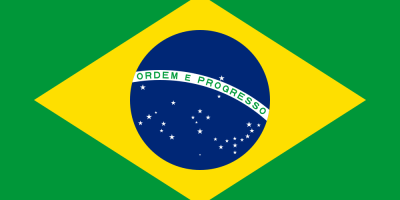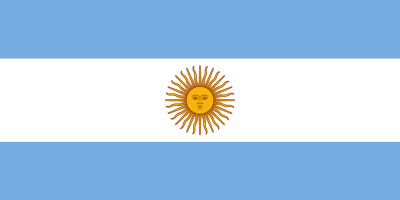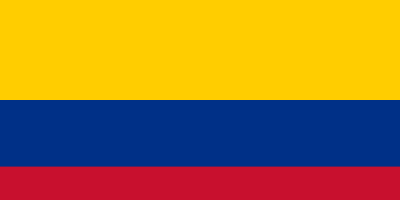Uruguay flag color codes is one of the most recognizable in South America, with its iconic sun in the upper left corner. The distinctive light blue and white stripes evoke the colors of the sky and peace. If you want to incorporate Uruguay’s national colors into your website or design, knowing the proper color codes is essential. This article will provide the HTML HEX, RGB, PANTONE, HSL, CMYK, HWB and NCOL values for the Uruguay flag colors so you can accurately represent this iconic flag. With the Uruguay flag color codes, you’ll be set to proudly display the distinctive colors of this South American nation.
Table of Contents
What are the colors of Uruguay flag?
The colors of the Uruguay flag are:
- White – This represents peace and honesty. The white stripe takes up 50% of the flag’s width.
- Light Blue – Known as “Uruguayan blue”, this color represents the sky, rivers, and the ocean. The light blue stripe takes up 50% of the flag’s width.
- Sun – In the upper left canton is a yellow sun with 32 alternating curved and straight rays. This represents the Sun of May, a national symbol of Argentina and Uruguay.
So in summary, the three colors are white, light blue, and yellow from the sun. The iconic light blue and white stripes comprise the main background of the flag.
Uruguay flag color codes & Color Names:
WHITE
| Color Model | Value |
|---|---|
| HTML | #FFFFFF |
| HEX | FFFFFF |
| RGB | 255, 255, 255 |
| PANTONE | White |
| HSL | 0°, 0%, 100% |
| CMYK | 0%, 0%, 0%, 0% |
| HWB | 0°, 0%, 0% |
| NCOL | N/A |
BLUE
| Color Model | Value |
|---|---|
| HTML | #79B8F8 |
| HEX | 79B8F8 |
| RGB | 121, 184, 248 |
| PANTONE | Sky Blue |
| HSL | 210°, 83%, 72% |
| CMYK | 51%, 26%, 0%, 3% |
| HWB | 210°, 42%, 3% |
| NCOL | N/A |
What is the meaning of colors in the Uruguay flag?
The colors of the Uruguay flag represent the following:
- White – Peace, honesty, calm
- Light Blue – The sky, rivers, and ocean
- Yellow Sun – The Sun of May, a symbol of the Argentine League (a revolutionary movement that helped Uruguay gain independence from Brazil in 1825)
More specifically:
- White represents peace and tranquility. Uruguay has a history of neutrality and non-intervention in global conflicts. The white epitomizes these peaceful ideals.
- Light blue symbolizes the clear skies and waters of Uruguay. With a long coastline along the Río de la Plata and the Atlantic Ocean, water is an important part of the country’s geography and culture.
- The yellow Sun of May in the upper left canton has dual meaning – it recalls the Argentine League that assisted Uruguay’s early independence, and also serves as a national symbol for both Uruguay and Argentina.
So in summary, the colors emphasize Uruguay’s peaceful nature, connection to water, and links to Argentina through the Sun of May icon. The powerful yet simple symbolism has made the Uruguay flag an enduring national emblem.
Explore More Flag Colors:
- Great Britain Flag Color Codes
- Kingdom of Serbia Flag (1882-1918) Color Codes
- Paraguay (Reverse) Flag Color Codes
- East Timor flag color codes
FAQs: Frequently Asked Questions:
Why is Uruguay so famous?
Uruguay is famous for several reasons, and its reputation is built on a combination of cultural, social, and economic factors. Here are some key reasons why Uruguay is notable:
Stable Democracy: Uruguay is known for its stable political environment and democratic governance. It has a long-standing tradition of political stability and respect for democratic institutions.
Quality of Life: The country consistently ranks high in global indices measuring quality of life. Factors such as low crime rates, a well-functioning public education system, and access to healthcare contribute to the high quality of life in Uruguay.
Progressive Social Policies: Uruguay has been a pioneer in progressive social policies. It was one of the first countries to legalize and regulate the production, sale, and consumption of marijuana. It also has a long history of promoting social welfare programs.
Peaceful and Safe Environment: Uruguay is known for being a safe and peaceful country. Its relatively low crime rates contribute to its reputation as a secure destination for tourists and residents alike.
Cultural Heritage: Uruguay has a rich cultural heritage, including contributions to literature, music, and the arts. The country has produced notable writers, musicians, and artists who have made significant contributions to Latin American culture.
Football (Soccer): Like many other South American countries, Uruguay has a strong football (soccer) culture. The national football team has a rich history and has won the FIFA World Cup twice (in 1930 and 1950), contributing to Uruguay’s international recognition in the world of sports.
Natural Beauty: Uruguay boasts picturesque landscapes, including beautiful beaches along the Atlantic Ocean, charming colonial towns, and rolling countryside. The country’s natural beauty is a draw for tourists seeking a tranquil and scenic destination.
Is Uruguay a country in Europe?
No, Uruguay is not a country in Europe. Uruguay is a South American country located on the eastern side of the continent. It is bordered by Brazil to the north, Argentina to the west, and the Atlantic Ocean to the southeast. The capital and largest city of Uruguay is Montevideo.
Is Uruguay a big or small country?
Uruguay is relatively small in terms of land area when compared to many other countries. It is the second-smallest country in South America, after Suriname. The total land area of Uruguay is approximately 176,215 square kilometers (68,037 square miles). In comparison, some of its larger neighbors, such as Brazil and Argentina, have significantly larger land areas.
Is Uruguay good country to live?
Here are some factors that contribute to Uruguay’s reputation as a favorable place to live:
Political Stability: Uruguay has a long tradition of political stability and a functioning democracy, contributing to a secure environment for residents.
Quality of Life: Uruguay consistently ranks high in global indices measuring quality of life. Factors such as a well-developed education system, access to healthcare, and a relatively low crime rate contribute to a high standard of living.
Social Policies: Uruguay has implemented progressive social policies, including the legalization and regulation of marijuana, and has a history of supporting social welfare programs.
Safe Environment: Uruguay is known for its safety and relatively low crime rates, making it an attractive destination for those seeking a secure living environment.
Natural Beauty: The country boasts picturesque landscapes, including beaches, colonial towns, and countryside, providing a pleasant and diverse living environment.
Cultural Scene: Uruguay has a rich cultural heritage with contributions to literature, music, and the arts. The capital, Montevideo, offers cultural events and activities.
Friendly People: Uruguayans are often described as friendly and welcoming, contributing to a positive social atmosphere.
Why is Uruguay so rich?
Here are some key factors that contribute to Uruguay’s economic situation:
Diversified Economy: Uruguay has a diverse economy that includes sectors such as agriculture, services, and manufacturing. This diversification helps mitigate risks associated with dependence on a single industry.
Agricultural Exports: Agriculture plays a significant role in Uruguay’s economy. The country is known for its beef production and exports, and it has a strong agricultural sector that includes soybeans, rice, and dairy products.
Stable Political Environment: Uruguay has a long history of political stability and democratic governance. A stable political environment contributes to a conducive atmosphere for economic growth and investment.
Social Policies: Uruguay has implemented progressive social policies, contributing to a relatively low poverty rate and a more equitable distribution of wealth. These policies include investments in education, healthcare, and social welfare programs.
Financial Services: Uruguay has developed a strong financial services sector, including banking and insurance, contributing to the overall stability of its economy.
Infrastructure: The country has invested in infrastructure development, including transportation and communication networks, which facilitates economic activities and trade.
Is Uruguay a highly developed country?
Here are some key factors contributing to Uruguay’s classification as a highly developed country:
Human Development Index (HDI): The Human Development Index, which measures a country’s average achievements in key dimensions of human development (health, education, and standard of living), consistently ranks Uruguay among the highest in Latin America.
Education: Uruguay has a well-established education system, with high literacy rates and a commitment to providing quality education. The country has made significant progress in improving access to education at various levels.
Healthcare: Uruguay has a well-developed healthcare system, and access to healthcare services is relatively widespread. The country has made progress in areas such as life expectancy and infant mortality rates.
Stable Democracy: Uruguay has a long history of stable democratic governance, with regular elections and a functioning democratic system. Political stability is a crucial factor in a country’s overall development.
Economic Development: While not among the wealthiest nations globally, Uruguay has a diverse and relatively stable economy. It has achieved a level of economic development that places it in the upper-middle-income category.
Social Policies: Uruguay has implemented progressive social policies, leading to a more equitable distribution of wealth and a relatively low poverty rate. Social programs contribute to the well-being of the population.
Infrastructure: The country has invested in infrastructure development, including transportation, communication networks, and utilities, supporting economic activities and overall development.
Quality of Life: Uruguay consistently scores high in global quality of life indices, reflecting factors such as low crime rates, a clean environment, and a generally high standard of living.
Is Uruguay richer than Argentina?
Uruguay is not generally considered wealthier than Argentina in terms of overall economic size. Argentina has a larger economy and population compared to Uruguay. However, the concept of wealth or prosperity can be measured in various ways, and it’s essential to consider different economic indicators.
What is the religion of Uruguay?
Uruguay is a secular country with a high degree of religious freedom, and the population is known for its religious diversity and tolerance. The majority of Uruguayans do not identify with a specific religious denomination, making Uruguay one of the least religious countries in South America.
Does Uruguay speak English?
The official language of Uruguay is Spanish. Spanish is spoken by the vast majority of the population, and it is used in government, education, media, and daily communication. English is not an official language, and while some individuals may have varying levels of proficiency in English, especially in urban areas and among younger generations, it is not widely spoken as a primary language.
Is Uruguay a cheap country?
Several factors contribute to the overall cost of living in Uruguay:
Currency: The currency used in Uruguay is the Uruguayan peso (UYU). Exchange rates can affect the cost of living for visitors and expatriates, and the value of the Uruguayan peso can fluctuate.
Housing: Rental prices, particularly in urban areas like Montevideo, can be relatively high. The cost of housing can significantly impact the overall budget.
Food: While food prices can vary, especially depending on where and how you choose to eat, groceries and dining out in certain areas may be more expensive compared to other South American countries.
Transportation: The cost of transportation, including fuel and public transportation, can contribute to the overall expenses. Domestic flights and long-distance bus travel are common means of transportation.
Tourist Areas: Some tourist destinations in Uruguay may have higher prices due to increased demand. Popular coastal areas and resort towns, for example, might have prices that are higher during peak tourist seasons.













